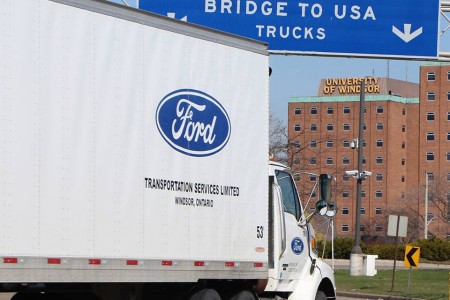
UWindsor’s Cross-Border Institute (CBI) has begun analyzing the first set of traffic data collected by remote sensors, which count trucks and cars crossing the Canada-US border at the Ambassador Bridge.
The data is being collected through five pole-mounted solar-powered remote traffic microwave sensors (RTMS) installed near the Ambassador Bridge crossing. The sensors gather information about movement of traffic in the Windsor-Detroit corridor. The collected information will be used to develop predictive delay models for drivers.
“This is important information because it will help us to predict delays an hour or more in advance. So drivers heading toward the border can be informed of what delay to expect when they reach the bridge, rather than just the current delay,” says CBI director Bill Anderson.
“Traffic profiles we provide will be extremely useful for truck drivers in planning optimal driving routes and will save time and money for the industry. Leisure travelers will also benefit and can save themselves the inconvenience of traffic jams on the bridge.”
The sensor data will also be useful for UWindsor researchers who are applying mathematical models that can help improve the performance of border inspection and toll plazas.
“The next steps will be to fuse the sensor information with traffic counts from highway sensors in Ontario and Michigan, and with GPS data from individual trucks to create a regional system for monitoring border-bound traffic and predicting border delays,” says CBI associate director Hanna Maoh.
The CBI researchers hope to have the system up and running in about a year.
The Cross-Border Institute at the University of Windsor was founded in 2008 under the direction of Dr. Anderson. The Centre approaches the study of border issues from a multi-disciplinary perspective that includes economic development, geography, engineering, management science, and political science. The Centre's location, steps away from the Windsor-Detroit border where almost one-quarter of Canada-US trade takes place, provides a unique perspective from which to study the impact of trends in cross border transportation and the impact of policy decisions by governments on both sides of the border.
